This article on Thermodynamic Steam Trap provides information about various aspects of this steam trap such as its operating principle, operation method, maintenance, advantages and disadvantages.
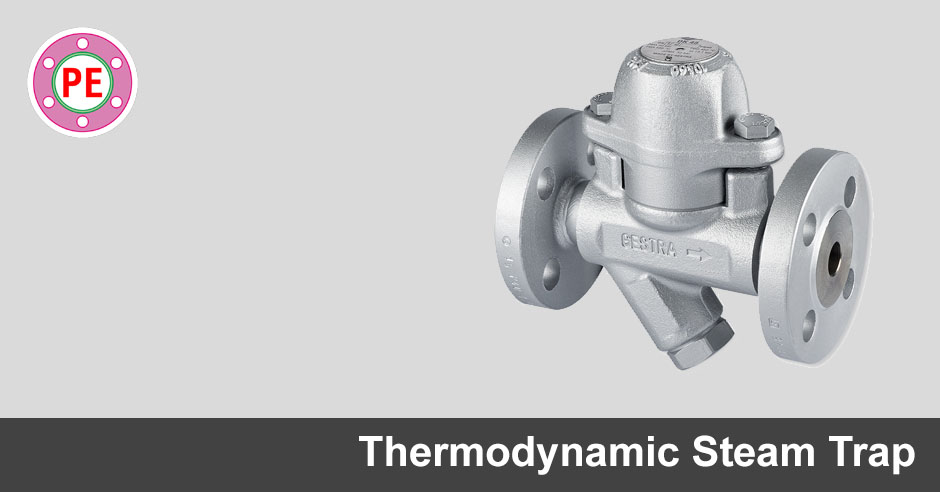
Thermodynamic steam trap is Kinetic Energy Operated Trap. This steam trap is most commonly used steam trap in Oil Industry.
Operation of thermodynamic steam trap
The thermodynamic trap is an extremely robust steam trap with a simple mode of operation. The trap operates by means of the dynamic effect of flash steam as it passes through the trap. The only moving part is the disc above the flat face inside the control chamber or cap.
On start-up, incoming pressure raises the disc, and cool condensate plus air is immediately discharged from the inner ring, under the disc, and out through three peripheral outlets.
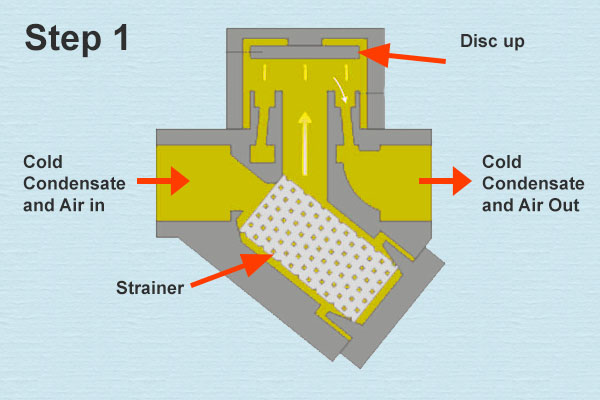
Hot condensate flowing through the inlet passage into the chamber under the disc drops in pressure and releases flash steam moving at high velocity. This high velocity creates a low pressure area under the disc, drawing it towards its seat.
[google-square-ad]
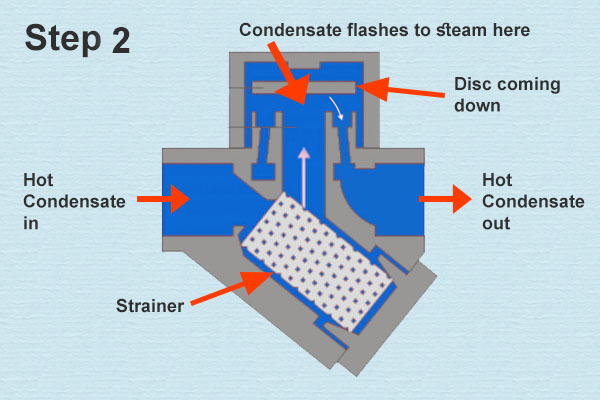
At the same time, the flash steam pressure builds up inside the chamber above the disc, forcing it down against the incoming condensate until it seats on the inner and outer rings. At this point, the flash steam is trapped in the upper chamber, and the pressure above the disc equals the pressure being applied to the underside of the disc from the inner ring. However, the top of the disc is subject to a greater force than the underside, as it has a greater surface area.
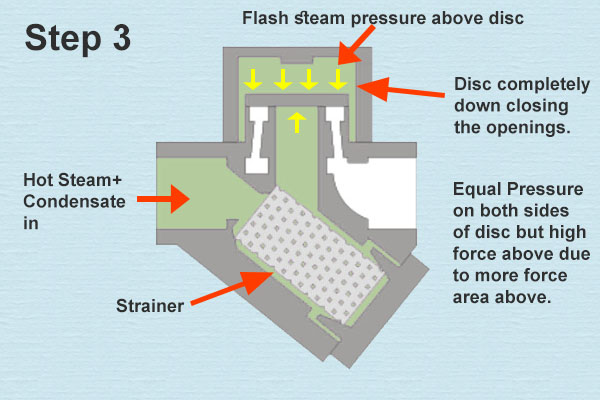
Eventually the trapped pressure in the upper chamber falls as the flash steam condenses. The disc is raised by the now higher condensate pressure and the cycle repeats.
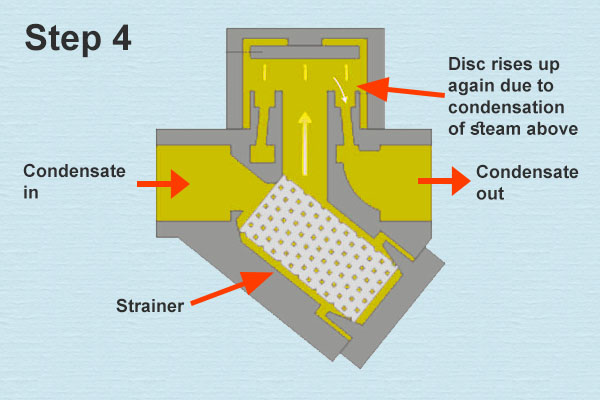
Maintenance of thermodynamic steam trap.
Check out following video by Forbes Marshall on maintenance of thermodynamic steam trap.
https://www.youtube.com/watch?v=S-wMxok4wa0
Advantages of thermodynamic steam trap
- Thermodynamic steam traps have ability to operate across their entire working range. They do not need any adjustment or change of internals.
- Thermodynamic steam traps are compact, simple, lightweight and have a large condensate capacity for their size due to larger size of openings.
- Thermodynamic steam traps can be used on high pressure and superheated steam and are not affected by water hammer or vibration.
- Thermodynamic steam traps are available in all stainless steel construction which offers a high degree of resistance to corrosive condensate.
- Thermodynamic steam traps are not damaged by freezing of condensate and are unlikely to freeze if installed with the disc in a vertical plane and discharging freely to atmosphere. However, operation in this position may result in wear of the disc edge.
- As the disc is the only moving part, maintenance can easily be carried out without removing the trap from the line by just removing the top cap, which is bolted or threaded.
- Thermodynamic steam traps makes an audible ‘click’ which occurs during tap opening and closing. This makes trap testing very easy and straightforward.
Disadvantages of thermodynamic steam trap
- To close the disc inside thermodynamic steam trap, low pressure is required below the disc which is possible only if velocity of flow below the disc is high. Higher velocity requires higher pressure differential. So thermodynamic steam traps will not work properly on very low differential pressures. They require a minimum inlet pressure of typically 0.25 bar g. They can withstand a maximum back pressure of 80% of the inlet pressure.
- Thermodynamic traps can discharge a large amount of air on ‘start-up’ if the inlet pressure builds up slowly. However, rapid pressure build-up will cause high velocity air to shut the trap in the same way as steam, and it will ‘air-bind’. In this case a separate thermostatic air vent can be fitted in parallel with the trap.
- Modern thermodynamic steam traps can have an inbuilt anti-air-binding disc which prevents air pressure building up on top of the disc and allows air to escape.
- The discharge of the trap can be noisy and this factor may prohibit the use of a thermodynamic trap in some locations, e.g. outside a hospital ward or operating theatre. If this is a problem, it can easily be fitted with a diffuser which considerably reduces the discharge noise.
- Oversize thermodynamic steam traps can increase cycle time and cause in wear of trap. Mains drainage applications often only need to be fitted with low capacity versions, provided proper consideration is given to siting the drain pockets correctly.
